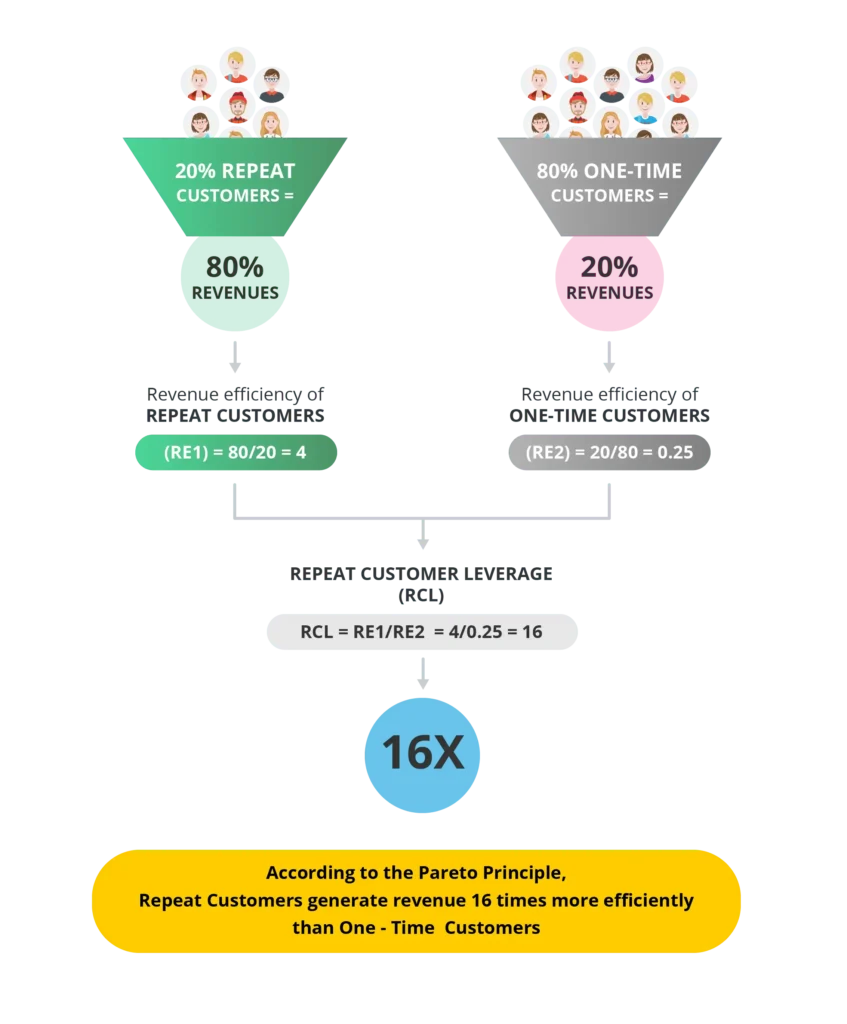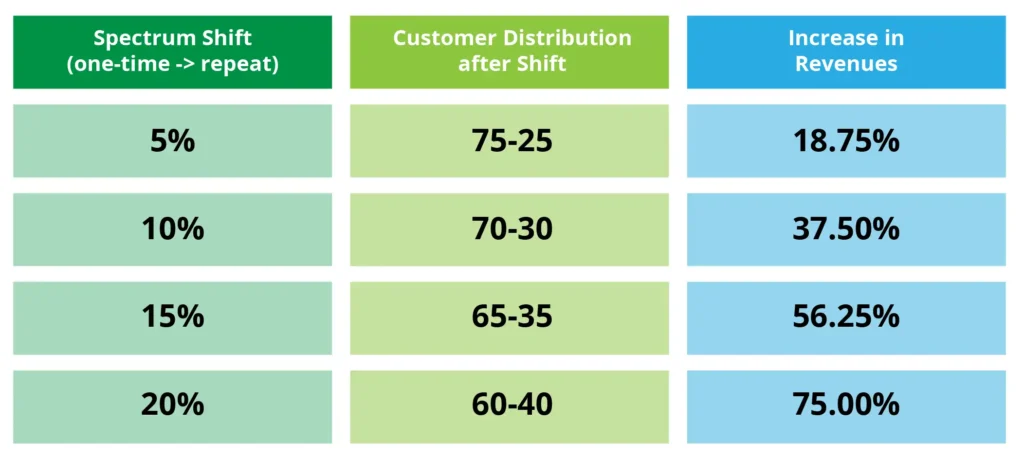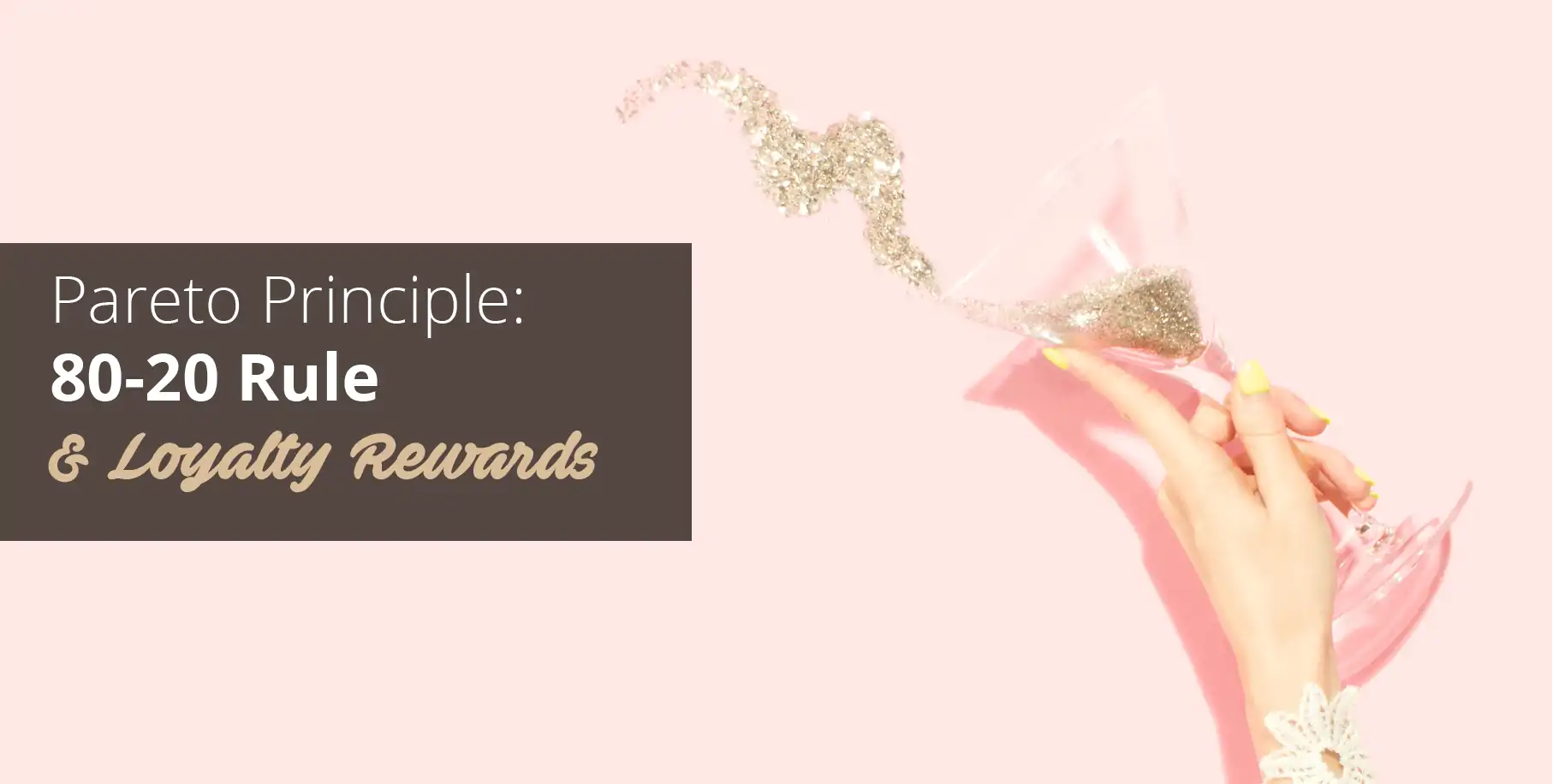Chances are, you may have heard about the 80-20 rule, or the Pareto Principle. The Pareto Principle is named after Italian Economist, Vilfredo Pareto, who observed in 1896 that 20% of the people in Italy owned 80% of the land. This principle has since been observed to be true in the areas of economics, software, business and many other areas.
The Pareto Principle is also applied to marketing where it states that 20 percent of your customers represent 80 percent of your sales. This is true for most businesses. However, if you can break free of this rule, it can deliver significant revenue uplift to your business! You can do that by investing heavily in customer retention. A loyalty rewards program is the best way to maximize customer retention.
Let us look at the mathematical model:

According to the Pareto Principle, repeat customers generate revenue 16 times more efficiently than one-time customers. Thus, if a loyalty rewards program is able to shift even 10% of one-time customers into repeat customers, revenues increase dramatically by 37.5%.

Intuitively it makes sense that this spectrum shift of a mere 10% from one-time customers to repeat customers produces approximately 40% more revenue because repeat customers generate revenue 16 times more efficiently. It is also logical that the higher the Repeat Customer Leverage (RCL), the higher impact a spectrum shift will have on the revenues. For example, the revenue impact of a 10% spectrum shift is much higher at a 90-10 distribution compared to an 80-20 distribution.
At an 80-20 distribution, a loyalty rewards program can typically induce a spectrum shift ranging from 5% to 20%. Here is a table that describes the mapping between the spectrum shift and the revenue increase for an 80-20 distribution.

This computation clearly proves that to take advantage of the Repeat Customer Leverage (RCL), every business must focus on customer retention by implementing a loyalty rewards program. The revenue uplift it can produce is significant. Moreover, this additional revenue is highly profitable because the cost of retaining repeat customers is much lower than the cost of acquiring the one-time customers.
Of course, the customer revenue distribution may not be as even as described by the Pareto Principle. For example, it could be 15% of the repeat customers generating 62% of the revenue. For ecommerce businesses, these numbers of repeat customers and their revenues are available in Google Analytics.
Zinrelo has developed a sophisticated loyalty value calculator to accurately estimate the revenue uplift from a loyalty rewards program by playing around with fine-tuned values of repeat customers and their revenues. Use this value calculator to estimate the impact of a loyalty rewards program on your business.
The Pareto Principle is a powerful tool for any business. It proves that focus on customer retention via a loyalty rewards program can result in a substantial revenue increase.


